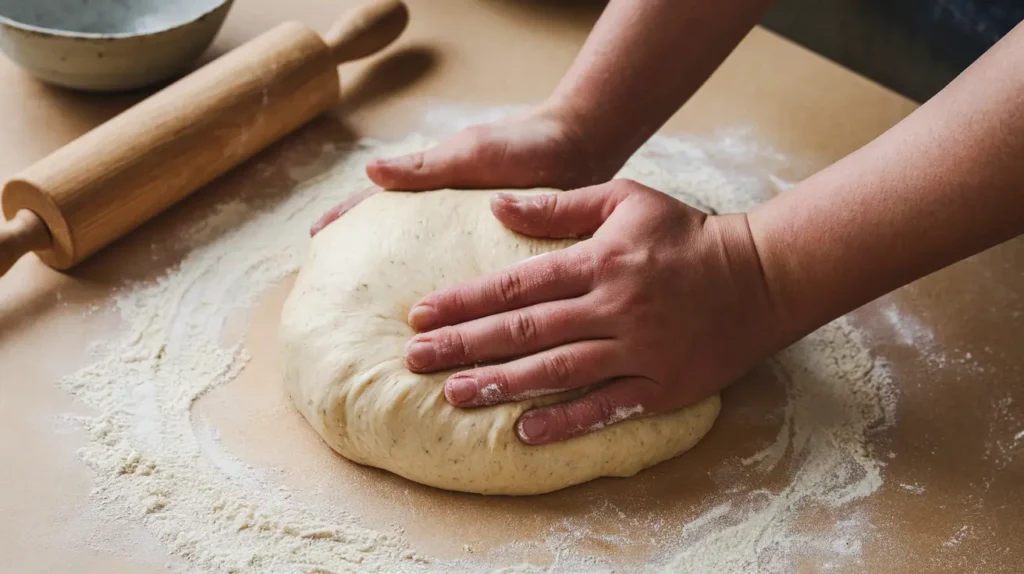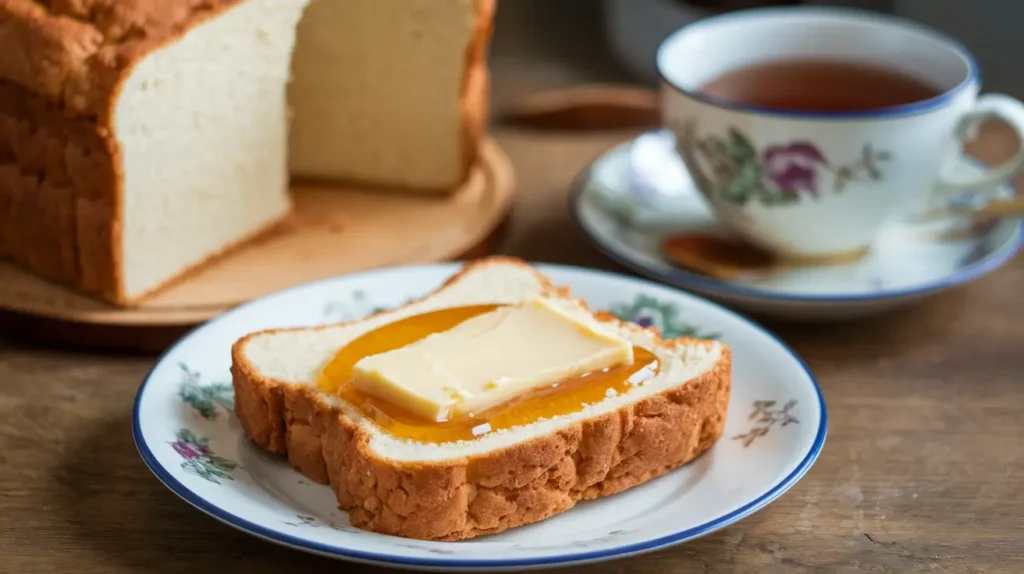Bread-making is a universal art, but few loaves rival the charm of soft and fluffy condensed milk bread. This delicate, lightly sweetened bread has captured the hearts of baking enthusiasts worldwide for its pillowy texture and rich flavor. In this guide, we’ll take you on a journey to understand what makes this bread so special, how to make it at home, and tips for perfecting every slice. Whether you’re a beginner or a seasoned baker, this guide has everything you need to bake your own masterpiece.
Introduction
What is Condensed Milk Bread?
Soft and fluffy condensed milk bread is a lightly sweetened bread enriched with condensed milk. This key ingredient gives the bread its distinctively rich, creamy flavor while contributing to its super-soft texture. Often compared to brioche but less buttery, this bread is perfect for both sweet and savory applications.
Why It’s Called “Soft & Fluffy”
The defining traits of this bread are its softness and airy texture. These qualities come from a combination of high hydration, careful kneading, and proper proofing. Condensed milk, with its natural sweetness and milk solids, also acts as a tenderizer, giving the bread its coveted fluffiness.
Historical Context and Popularity
Condensed milk bread is believed to have originated in East Asia, where enriched bread recipes are particularly popular. Over time, it gained global fame, thanks to its simple ingredients and extraordinary taste. In recent years, it has become a staple in bakeries and home kitchens alike, adored for its versatility and nostalgic appeal.
Ingredients and Tools Needed for Condensed Milk Bread
Essential Ingredients Breakdown
Creating soft and fluffy condensed milk bread requires just a handful of basic ingredients, each playing a vital role in achieving that signature pillowy texture and rich flavor. Here’s what you’ll need:
- Condensed Milk: The star ingredient adds sweetness and richness, keeping the bread moist and tender.
- All-Purpose Flour: Opt for high-quality flour to ensure a soft crumb structure.
- Yeast: Active dry yeast helps the bread rise and develop its airy texture.
- Eggs: They enhance the bread’s structure and flavor.
- Butter: For that melt-in-your-mouth feel.
- Sugar: Balances flavors without overpowering the sweetness from condensed milk.
- Salt: Enhances all the other flavors and balances the sweetness.
Tools for Perfect Bread Making
Having the right tools can elevate your baking experience and guarantee a better result. Here’s a quick checklist:
- Mixing Bowls: Essential for combining ingredients without making a mess.
- Dough Hook (for Stand Mixer): A lifesaver for kneading sticky dough.
- Kitchen Scale: Ensures precise measurements, critical for consistent results.
- Baking Pan: A non-stick or greased loaf pan is ideal for shaping and baking your bread.
- Thermometer: Measures the water temperature to activate yeast perfectly.
For additional baking tips, check out resources like Perfect Dutch Oven Bread for insights on bread-making techniques.
The Perfect Recipe for Soft & Fluffy Condensed
Step-by-Step Instructions
Ready to bake your own soft and fluffy condensed milk bread? Follow these detailed steps:
- Activate the Yeast: In a small bowl, dissolve 1 tsp of sugar in 1/4 cup of lukewarm water. Sprinkle in the yeast and let it sit for 5-10 minutes until foamy.
- Mix the Dough: Combine the flour, sugar, and salt in a large mixing bowl. Add condensed milk, an egg, melted butter, and the activated yeast mixture. Mix until a sticky dough forms.
- Knead the Dough: Knead for 8-10 minutes until the dough becomes smooth and elastic. You can use a stand mixer for this step to save time.
- First Proofing: Place the dough in a greased bowl, cover with a damp cloth, and let it rise for 1-2 hours in a warm spot.
- Shape the Dough: Punch down the risen dough, divide it into smaller portions, and shape them into rolls or a loaf. Place them in a greased baking pan.
- Second Proofing: Let the shaped dough rise again for 30-45 minutes.
- Bake: Preheat the oven to 350°F (175°C). Brush the dough with egg wash for a golden crust, then bake for 20-25 minutes.
- Cool and Enjoy: Let the bread cool on a wire rack before slicing.
Key Techniques for the Best Texture
- Proper Hydration: Use the right amount of liquid to ensure a soft dough.
- Controlled Proofing: Over-proofing can deflate the dough, while under-proofing leaves it dense.
- Gentle Handling: Avoid overworking the dough after proofing to preserve air bubbles.
Mistakes to Avoid While Baking
- Skipping the Proofing Stages: This compromises the bread’s fluffiness.
- Using Cold Ingredients: Yeast activates best at warm temperatures.
- Overbaking: Keep an eye on the bread during the last few minutes to prevent a dry crust.

Variations and Add-ons for Condensed Milk Bread
Flavors and Add-ins
One of the best things about soft and fluffy condensed milk bread is its versatility. This classic recipe can be easily customized to suit your taste preferences. Here are a few delicious ideas:
- Chocolate Chips: Sprinkle some into the dough for a sweet, chocolaty surprise.
- Dried Fruits: Raisins, cranberries, or apricots add a delightful chewiness.
- Coconut Flakes: Perfect for a tropical twist.
- Spices: A dash of cinnamon or nutmeg can elevate the flavor for holiday seasons.
Savory vs. Sweet Versions
Although traditionally sweet, condensed milk bread can also take on a savory profile:
- Savory Variations: Add herbs like rosemary or garlic powder, and skip the sugar for a perfect dinner roll. Cheese-laden dough is another irresistible option.
- Sweet Variations: For an indulgent dessert bread, top it with a glaze made from powdered sugar and a splash of milk or lemon juice.
If you’re exploring new bread recipes, consider browsing the Traditional Italian Breakfast ideas, which pair wonderfully with homemade breads.
Storing and Reheating Tips for Condensed Milk Bread
Proper Storage Methods
To keep your soft and fluffy condensed milk bread fresh for as long as possible, proper storage is essential:
- Room Temperature: Store the bread in an airtight container or resealable bag to retain its softness. Avoid refrigeration, which can dry it out.
- Freezing: For longer storage, wrap the loaf in plastic wrap, then foil, and freeze. Thaw at room temperature for a few hours before serving.
Reheating Without Losing Fluffiness
When reheating, the goal is to restore the bread’s pillowy texture without drying it out:
- Microwave: Wrap the bread in a damp paper towel and heat for 10-15 seconds.
- Oven: Warm the bread at 300°F (150°C) for 5-7 minutes, covered with foil to trap moisture.
- Toaster Oven: Lightly toast slices for a slightly crispy exterior while keeping the inside soft.
For more tips on pairing bread with meals, explore the Italian Meatloaf Recipe for complementary dishes.
Health Benefits and Nutritional Aspects of Condensed Milk Bread
Although soft and fluffy condensed milk bread is a treat, it also offers some nutritional value when enjoyed in moderation:
Nutritional Value of Ingredients
- Condensed Milk: A concentrated source of calcium and protein, it supports bone health and muscle repair.
- Eggs: Packed with essential amino acids, eggs provide structure to the bread and contribute to a balanced diet.
- Butter: While it adds richness, butter also contains fat-soluble vitamins like A, D, and E.
How to Make It Healthier
For those seeking a healthier version of condensed milk bread, small tweaks can go a long way:
- Use Whole Grain Flour: Substitute a portion of all-purpose flour with whole wheat or spelt flour for added fiber.
- Reduce Sugar: The condensed milk already provides sweetness, so cutting down on added sugar is easy.
- Alternative Fats: Replace butter with healthier options like coconut oil or olive oil to lower saturated fat content.
Remember, balance is key—this bread is best enjoyed as part of a varied diet.
FAQs
- Can I Use Evaporated Milk Instead of Condensed Milk?
No, evaporated milk lacks the sweetness and creamy consistency of condensed milk, which is crucial for this bread’s soft texture and flavor. - How Do I Make It Gluten-Free?
Replace all-purpose flour with a gluten-free baking mix designed for yeast-based recipes. Add xanthan gum if it’s not already included in the mix for better elasticity. - Why Is My Bread Not Fluffy?
Common causes include under-kneading, insufficient proofing, or old yeast. Ensure your yeast is fresh and give the dough enough time to rise. - Can I Freeze Condensed Milk Bread?
Absolutely! Wrap the bread tightly in plastic wrap and aluminum foil before freezing. Thaw it at room temperature, and reheat gently for best results.
If you’re curious about other baking tips, check out the article on What Is the Process of Making Fresh Pasta to learn more about working with dough.

What Makes Bread Soft and Fluffy?
The secret to achieving soft and fluffy condensed milk bread lies in the combination of ingredients and techniques. Condensed milk provides richness and moisture, while proper kneading develops the gluten structure needed for a light texture. Proofing the dough in a warm environment also allows the yeast to work its magic, creating airy pockets within the bread.
Is Condensed Milk Necessary in Bread?
Yes, condensed milk is a game-changer in this recipe. It not only adds sweetness but also contributes to the tender crumb and unique flavor of soft and fluffy condensed milk bread. Substituting it with another liquid may result in a less rich and moist loaf.
How Do You Store Homemade Bread?
To keep homemade bread fresh, store it in an airtight container at room temperature for up to three days. For longer storage, freezing is the best option. Always ensure the bread is completely cool before sealing it to prevent condensation.
What Is the Best Yeast for Fluffy Bread?
Active dry yeast or instant yeast works best for fluffy bread recipes. Both types produce consistent results, but instant yeast requires no pre-activation, making it more convenient. Whichever you use, ensure the yeast is fresh for optimal rise.
Conclusion and Final Thoughts
Soft and fluffy condensed milk bread is more than just a delightful recipe—it’s an experience that brings warmth and joy to any kitchen. From its rich flavor to its irresistible texture, this bread is a testament to the wonders of simple ingredients combined thoughtfully. Whether you enjoy it plain, with your favorite toppings, or as part of a meal, it never fails to impress.
This guide has walked you through every step, from understanding its unique ingredients to troubleshooting common issues and exploring creative variations. Baking this bread at home may take a little patience, but the rewards are truly worth it.
If you’re ready to expand your baking repertoire further, explore related recipes like the Dutch Oven Bread or tips on pairing bread with traditional meals. With a little experimentation, you’ll discover endless ways to make baking a fulfilling and delicious hobby.

